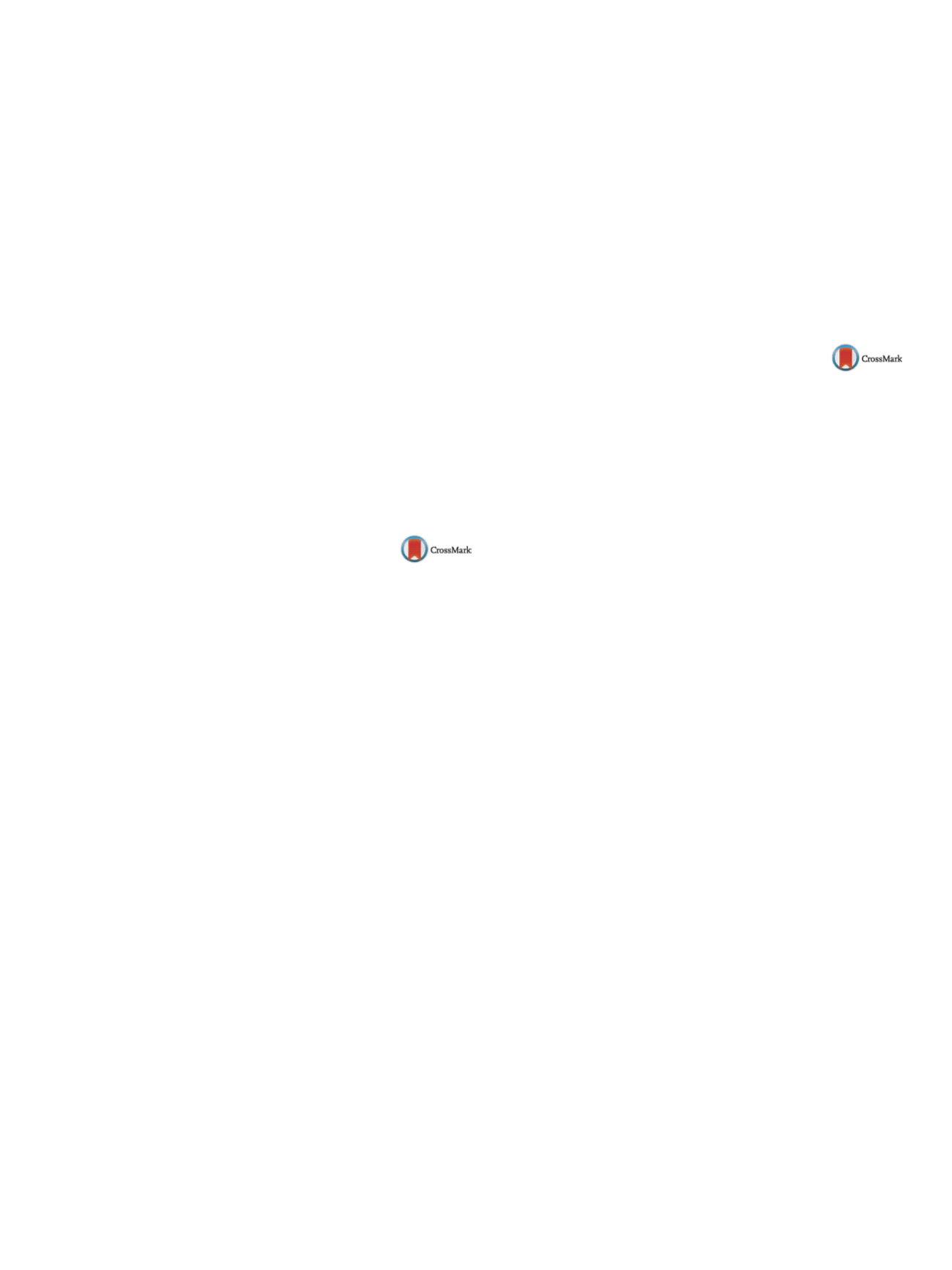

25th European Congress of Psychiatry / European Psychiatry 41S (2017) S405–S464
S455
symptoms of ADHD. In adults these core symptom are also present
but inattention is more prominent. Correct diagnosis of ADHD
remains challenging, especially as several other psychiatric and
medical disorders show the similar symptomology.
Objectives
The diagnosis of ADHD is clinical based upon a clus-
ter of symptoms and criteria established by guidelines such as the
DSM-5. Yet, objective markers are needed to support the clini-
cal ADHD diagnosis in children and adults. Studies suggest that a
neurobiological marker (eye vergence i.e. where the eyes move in
opposite directions) can detect ADHD in children and adults. The
eyes converge during orienting attention, as evidenced by visual
event related potentials at parietal locations. This attention related
vergence is impaired in ADHD patients.
Methods
We review the neurobiology and findings of eye ver-
gence and the relevance of its measurement for the clinical
diagnosis of ADHD.
Results
Neural circuits underlying eye vergence and attention
largely overlap. Using machine learning, eye vergence measure-
ments can classify ADHD in children and adults with high (> 90%)
accuracy.
Conclusions
Eye vergence is a promising candidate for an objec-
tive clinical diagnosis of ADHD.
Disclosure of interest
Part of this research was paid by Braingaze.
HS is co-founder and shareholder of Braingaze.
http://dx.doi.org/10.1016/j.eurpsy.2017.01.489EV0161
Anxiety-depressive disorders in
children: Neurobiological and
neurohormonal aspects
P.T.
1 ,∗
, E. Mykhailova
1, T. Matkovska
1, N. Reshetovska
1,
A. Goloborodko
21
SI “Institute for Children and Adolescents Health Care of the NAMS
of Ukraine”, Psychiatry, Kharkiv, Ukraine
2
Kharkov V. Karazin National University named, Psychiatry,
Kharkov, Ukraine
∗
Corresponding author.
Objective
The need for diagnosis and correct classification of
depression among children is dictated by its burdeness with age,
high risk of recurrence at further stages of child development and
propensity to suicidal behavior.
Materials and methods
One hundred and sixty adolescents with
ADD were included in our study. The study design comprised:
clinicopsychopathological, somatoneurological, psychological and
neurohormonal methods.
Results
Clustering symptom of anxiety and depression have
shown that for children in early puberty is typical more forma-
tion of somatic (35.2%), behavioral (21.6%), phobic (21.6%) variants
of depression, less-anxiety (13.5%), asthenia (8.1%). For children in
puberty – apathetic (30.1%), anxiety (28.9%), dismorfofobic (27.7%),
behavioral (13.3%) variants. The proportion of suicidal behav-
ior of depression increases in proportion to age, mainly due to
suicidal thoughts, sayings, auto-aggressive behavior. Analysis of
the formation conditions of anxiety and depression in children
showed a significant correlation of genetic, biological and socio-
environmental components.
Symptoms of the minimal brain dysfunction (MBD) at an early
ontogeny (prognostic value = +4.8), loaded natal period (PV = +4.2),
frequent colds in the medical history (PV = 3.7), signs of cerebro-
organic failure (PV = +3.8) and obesity as an endocrine disorder
(PV = +2.1), sex and age of the manifestation of the first depres-
sive episode in the early stages ontogenesis in boys aged 7 years
(PS = +5.3), in girls aged 9 years (PS = +3.9) have been registered
among biological risk factors for the ADD formation. Prognostic
significance of neurohormonal parameters as regards the risk for
ADD formation in adolescents is based on a decreased serotonin
level in patients with depressive anxiety (PV = +2.8) and a reduced
melatonin level, irrespective of the variant of clinical depression
(PV = +2.4).
Conclusion
Determination of neurobiological and neurohor-
monal risk markers for the development of the ADD makes it
possible to carry out psychoprophylactic measures.
Keywords
Children; Anxiety-depressive disorder; Prognostic
value; Neuro-biological; Neurohormonal aspect
Disclosure of interest
The authors have not supplied their decla-
ration of competing interest.
http://dx.doi.org/10.1016/j.eurpsy.2017.01.490EV0162
A technology for providing
therapeutic training of children with
the anxiety-depressive disorders,
comorbid with obesity
P.T.
1 ,∗
, E. Mykhailova
1, T. Matkovska
1, N. Reshetovska
1,
A. Goloborodko
21
SI “Institute for Children and Adolescents Health Care of the NAMS
of Ukraine”, Psychiatry, Kharkiv, Ukraine
2
Kharkov V. Karazin National University named, Psychiatry,
Kharkov, Ukraine
∗
Corresponding author.
Background and aims
The study considers the problem of the
anxiety-depressive disorders (ADD) in children with concomitant
obesity in the context of the search for effective methods of their
correction.
Materials and methods
Included 64 children at puberty with
the anxiety-depressive disorders, comorbid with obesity. Design
comprised: clinicopsychopathological, somatoneurological, psy-
chological monitoring (CDRS-R); the Spielberger, “Me and my
illness” and “Man in the Rain” projective drawing tests.
Results
The symptoms of emotional and vegetative tension,
depression registered in all studied children.
In the developed model of support, the interventions of primary
level are aimed on family and closest encirclement of the child
(family psychotherapy, psycho-educational programs for children
and their parents). Strategies:
– stressful situation in the family (practical, psychological support
and education of parents);
– for relief of depressive and vegetative-anxious symptoms (using
art therapy, cognitive behavioral therapy);
– for education of patients in the wider context – quality of life,
coping, motivation and modification of inappropriate behaviors
(modeling of new cognitions).
The technology includes the diagnosis of the psychosomatic core
of the disease, areas of neurotic fixation of the child with ADD and
obesity, correction of emotional homeostasis and cognitive imbal-
ance by activation of the personality individual resources as a result
using cognitive-behavioral and art-dynamic therapy, as well as a
“Control of eating behavior” training program, and solving certain
situational problems by a child with the disease.
Conclusion
Our method makes the tactics of psychotherapeutic
and psycho-educational intervention at an early stage of the dis-
ease.
Keywords
Children; Anxiety-depressive disorder;
Art-therapeutic intervention
Disclosure of interest
The authors have not supplied their decla-
ration of competing interest.
http://dx.doi.org/10.1016/j.eurpsy.2017.01.491

















